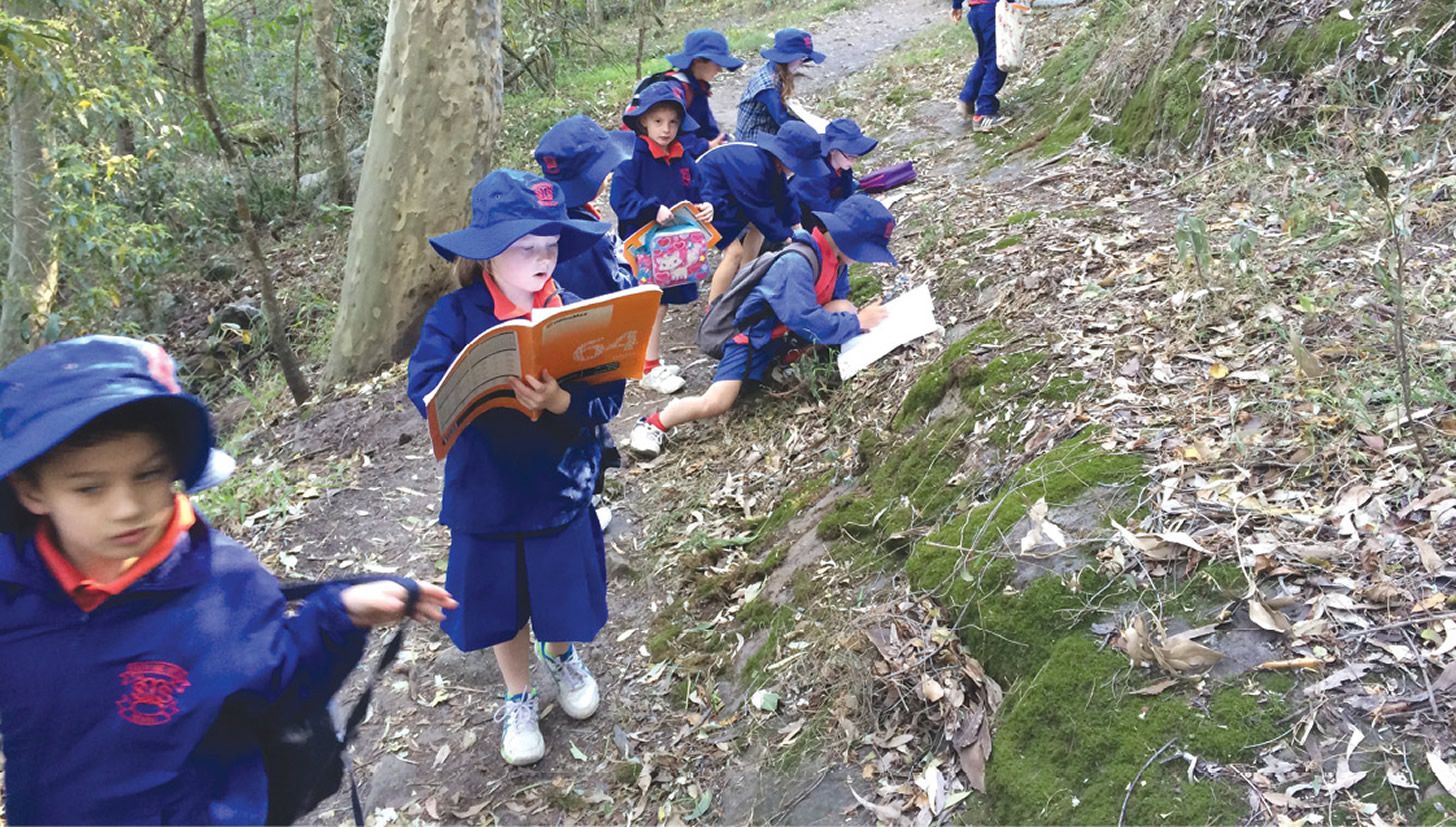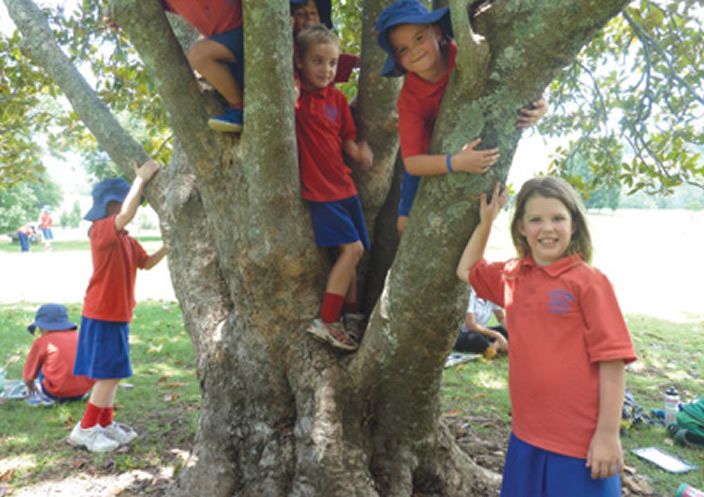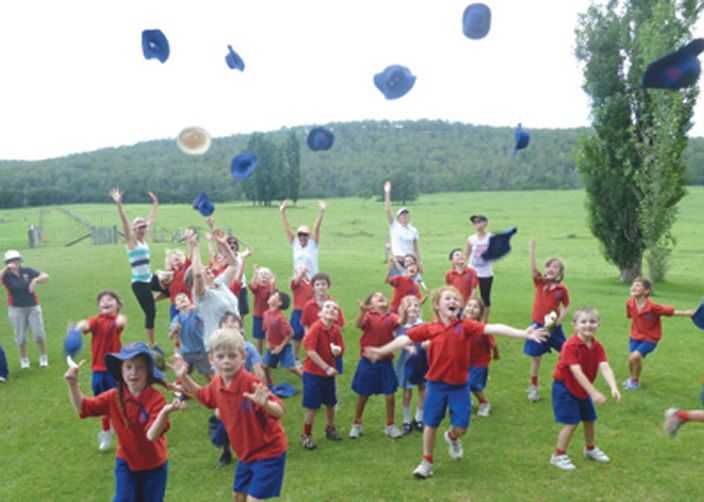For many years I implemented outdoor learning programs with K-6 classes, Amanda Lloyd writes. With increasing academic accountability I was constantly asked to justify my teaching methods and pedagogical choices. At the same time the mainstream media picked up on the nature disconnect phenomenon. Drawing on knowledge gained while completing Forest Schools instructor training in England, a Graduate Certificate of Outdoor Education and a Masters of Environment, I embarked on PhD study to draw all the pieces of the jigsaw together, to provide evidence that outdoor learning had a rightful place in the Australian primary school curriculum.
Learning and teaching outside the box


Connection to nature
In his book Last Child In the Woods Richard Louv coined the term nature deficit disorder. He defines this as “The human cost of alienation from nature, among them: diminished use of the senses, attention difficulties, and higher rates of physical and emotional illness” (Louv, 2008, p36).
It is a fact that children today have fewer opportunities to spend time in nature compared to 20-30 years ago (Laird, McFarland-Piazza & Allen, 2014). The opportunities for children to engage in the outdoors are rapidly decreasing for a myriad of reasons such as urban design issues, less unstructured free time and the predominance of screens for all measure of activities. The nature disconnect is apparent across all aspects of children’s lives, family time, unstructured play, social interactions, non formal education and formal education (Lloyd & Gray, 2014).
There is a growing body of evidence that interacting with nature in the school curriculum delivers measurable benefits to children in social, emotional, physical and academic spheres (Munoz, 2009, O’Brien & Murrary; 2007 and Rickinson et al 2004). Natural spaces offer multiple choices, which enable different personalities to flourish (Groves & McNish, 2011). The self-directed essence of the outdoors allows children to develop skills specific to their lives, interests and talents. Consequently, this allows children to engage in known activities and increasingly complex tasks with greater enjoyment and proficiency (Knight, 2009).
When children feel familiar and secure in the places they encounter, they are far more likely to access, engage and experience nature (Kellert, 2012). Schools and the areas immediately around them are familiar to children. Therefore they are an ideal setting for children to connect to the natural world. Furthermore, revisiting the same learning environment multiple times increases bonds with place and allows children to develop intricate knowledge of their local environments and cultures.
Outdoor learning in practice
The focus of my PhD study was a Year 1 class who completed a half or whole day of learning outside each week. The most frequently visited learning site was the school playground. Local parks within walking distance, the Shoalhaven River and nearby Nowra town centre were visited often. While bus trips to nearby Jervis Bay and Arthur Boyd’s Bundanon were also pivotal to the program. The integrated curriculum taught spanned English, Science, Art and Geography, while paying specific attention to the cross curricula priorities of Sustainability and Aboriginal and Torres Strait Islander Histories and Cultures. Corresponding lessons occurred inside the classroom.
Outdoor learning curriculum was scheduled into the normal teaching program. The creation of maps, shelters, story settings and artworks using loose natural materials were common activities. Children were encouraged to talk and interact with their friends as they made constructions, went on bushwalks, splashed in rivers or took photographs of land features. At all times the class could record their learning in their ‘Nature Journal’ using pictures, words or sentences. There was no right or wrong and children were encouraged to show initiative, responsibility and take risks in their learning.
An example session could look like the following brief overview based on English outcomes.

‘The Stick Man’
Empowered and engaged learners
A plethora of advantages to completing outdoor learning were discovered throughout the case study. By combining research methods such as observations, interviews, academic records and photographs, a full spectrum of emergent learning themes were developed. The children themselves were empowered as researchers to draw pictures, make constructions and take video footage by wearing GoPro cameras. While the results from this case study are extensive and detailed at a glance they can be categorised into two key areas; curriculum/ engagement and wellbeing.
Curriculum and engagement saw an increased vocabulary and improved oral language skills. Motivation to complete tasks, especially written tasks based on outdoor learning experiences was witnessed. Children were engaged on tasks consistently and reluctant learners often completed more work outdoors than inside the traditional classroom. Academic growth for the class exceeded a standardised year of learning growth when examined alongside mandated assessments.
Areas of children’s overall wellbeing that gained as a result of outdoor learning were; responsibility, risk taking, leadership, social skills, self-care and parental involvement leading to a heightened sense of community. Children made connections to past events, places they had visited before, environmental conscious actions and could link places to Indigenous stories they knew. The class began to look into the intricate details of local environments and could name, describe or experience nature with forever increasing clarity.
Why teach outside the box?
Outdoor learning enables a nature connection not afforded to many of our children these days. Yet it offers much more than that. It promotes learning, stimulates interest, enables social skill development and connects children to areas that surround them. It enables children to have direct experiences with their local environment and community. Outdoor learning is real life authentic learning, it prepares for future life in the places our children will experience it. As teachers we have the skills to implement outdoor learning – all it needs is the initiative to look beyond our walls and outside the box.



































































































































